Determined to keep the "royal gift", the old farmer harvested longan that was 10 times more expensive ( Video : Reporter group).
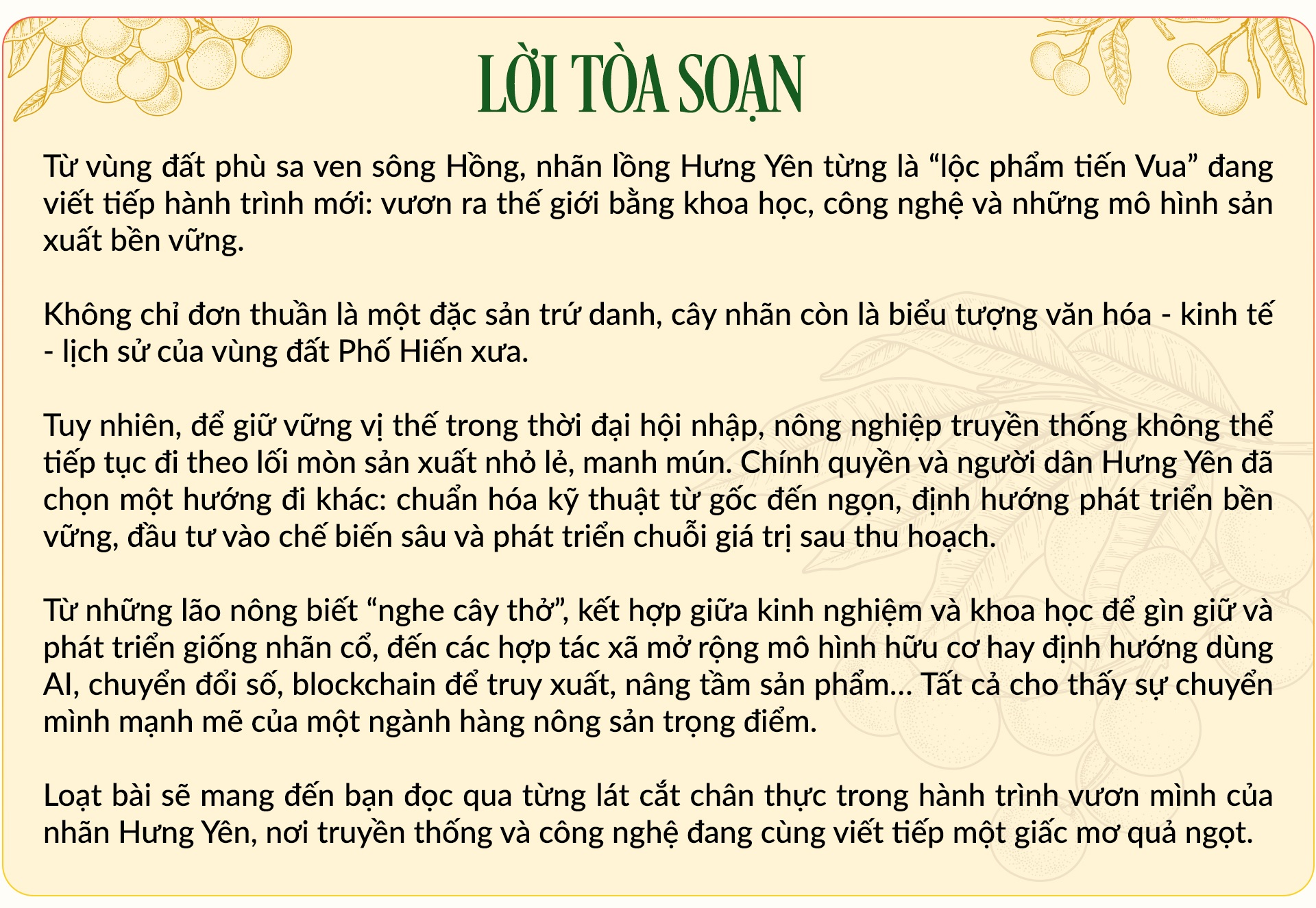
These days, Pho Hien land is filled with the scent of longan.
Squeezing through the dirt path between the green longan branches of his garden, 70-year-old man Bui Xuan Tam gently lifted the bunches of fruit with his hands, his eyes observing attentively.
The thick longan skin, covered with a thin layer of white powder like frost, signals a bumper crop is taking shape.
“This season has just begun to form the pulp. In a little over a month, these bunches of longan will be big, with thick, sweet pulp. This year is going to be a good harvest,” he said, both predicting and expressing hope.
In Ne Chau village (Tan Hung commune, Hung Yen ), Mr. Bui Xuan Tam is known as a person who has devoted almost his entire life to the ancient longan variety.
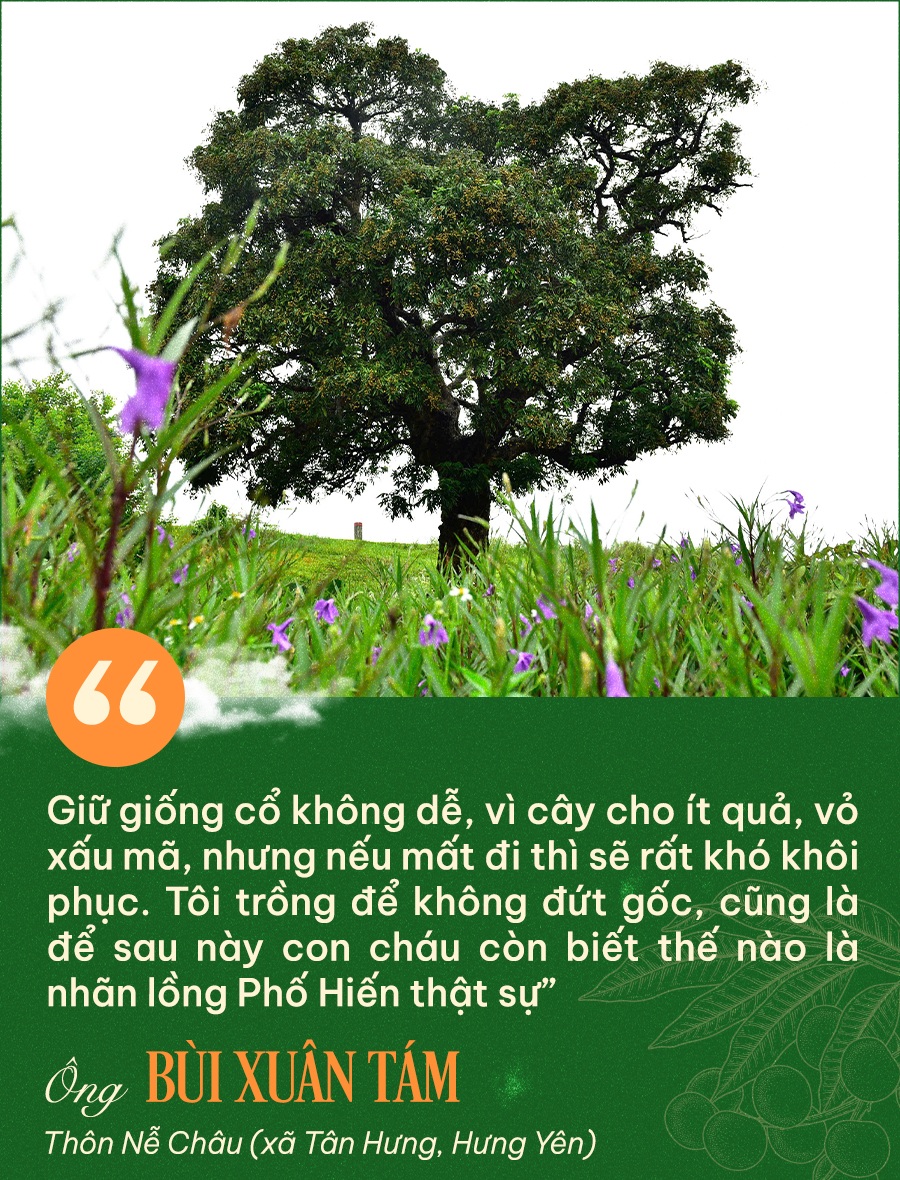
Not only is he a longan farmer, he is also a person who quietly preserves traditional longan trees - a variety that was once presented to the king, in the context of many households switching to growing new varieties with higher yields.
“It is not easy to preserve the old variety, because the tree produces few fruits and has an ugly shell, but if lost, it will be very difficult to restore. I plant it so that the roots will not be broken, and also so that future generations will know what real Pho Hien longan is,” said Mr. Tam.
Combining traditional experience and modern farming methods, he has improved the productivity and quality of the ancient longan variety. From trees that seemed to have only nostalgic value, Mr. Tam's longan garden now produces regular fruit with thick flesh, deep sweetness and aroma, especially many times more valuable than the common longan variety on the market.
Mr. Bui Xuan Tam is a typical representative of the Hung Yen longan farmers, choosing to preserve and develop through innovation.

In 1977, right after graduating from high school, young man Bui Xuan Tam put down his pen and joined the army. He fought in Cambodia, then went to the northern border during the fiercest time in 1979.
After returning from the war, he transferred to teach at the Engineering Command Officer School, then returned to his hometown to work as Party Secretary of Ne Chau village for 15 years.
“I always think about the longan trees in my hometown. I have been to many places, but only the longan trees in my hometown have such a special flavor,” Mr. Tam shared.
After leaving the army, he started to try his hand at agriculture. At that time, longan was not a popular crop and its economic value was not high. He chose the Canh orange variety - a trendy fruit tree at that time. For two years, he studied orange growing, carefully recording the processes of branch girdling, watering, and fertilizing to induce flowering.
However, the soil in Ne Chau was not suitable. The low-lying, water-retaining soil made the orange roots rot easily, the trees grew poorly, the fruit lost color, and the segments were pale. After several losing crops, he accepted failure.
But instead of giving up, he used the knowledge he learned to improve the soil, overcome humidity, raise beds, treat groundwater, and create a better environment for perennial fruit trees.
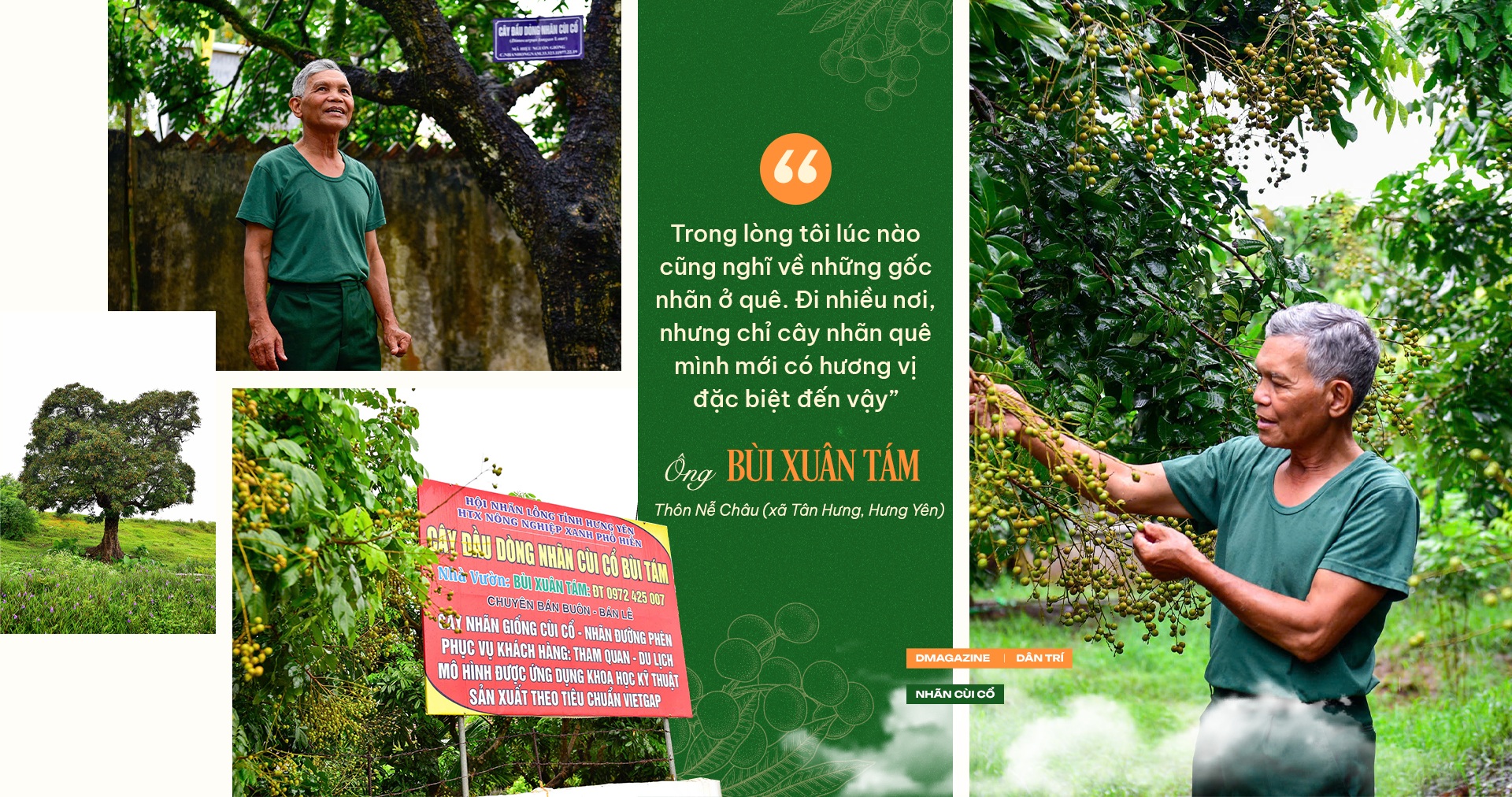
It was those failed experiments that became the premise for the journey to preserve and enhance the ancient longan variety later on.
“Being a farmer is like being a soldier: don’t get discouraged. If you fail in one field, you can learn from it and apply it to another field,” he said.
After the garden was renovated, he switched to growing longan.
The contractor bought the entire row of longan trees planted along the dike. Most of them were common longan varieties, except for one special tree: small fruit, thick flesh, small seeds, fragrant and sweet. This rare longan variety is sought after by gourmets as gifts.
He took seeds from that longan tree and planted them in his garden, but out of hundreds of seedlings, only one kept the same quality as the hundreds-year-old mother tree.
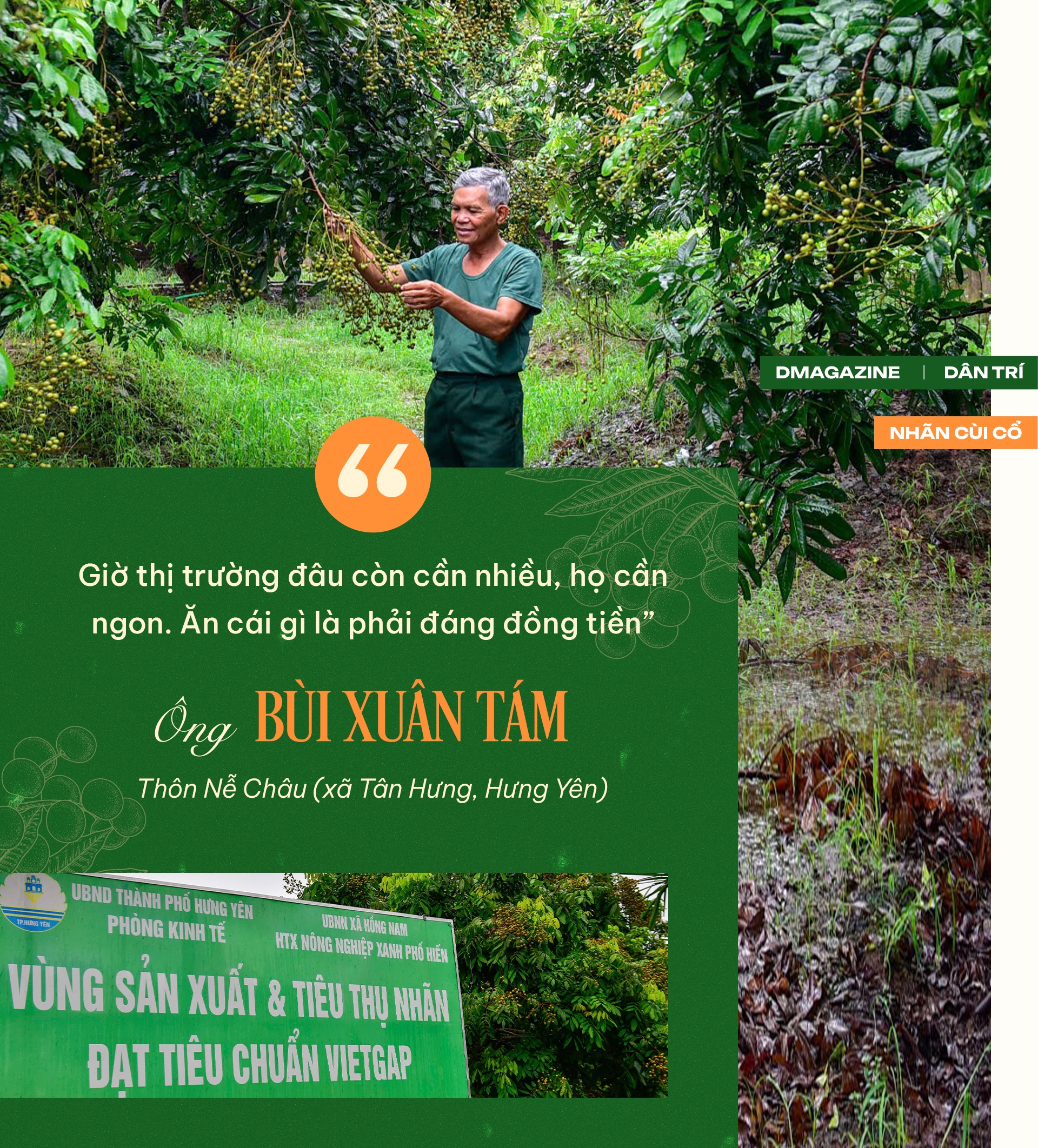
Therefore, he kept it as a breed, propagated it by traditional grafting method, and named it "Bui Tam Old Longan", both to remember its origin and to affirm its unique quality characteristics.
While everyone is competing to show off their output of tens of tons, hundreds of tons, he quietly chose a different direction: Farming doesn't require much, just quality.
“The market at that time only looked at quantity, no one cared about quality. Mr. A and Mr. B only boasted about selling ten tons this year. But each kilo sold for less than 15,000 VND.
Meanwhile, my longan variety can sell for up to 120,000 VND/kg in some years. So, one ton of my longan is equivalent to 8 tons of other people's longan. It's light, doesn't hurt the shoulders, and has a high value," the gray-haired man frankly shared.
Mr. Tam added: “Now the market doesn’t need much anymore, they need good. Whatever you eat must be worth the money.”

A musty smell wafted through the garden breeze. It wasn’t the smell of chemical fertilizer, but the strong, moist scent of freshly watered anchovies mixed with unhulled corn and soybeans drying under a tarp.
“The smell isn’t too strong today because of the rain,” Mr. Tam said, then bent down to remove the tarpaulin for the reporter to see closely.
In the middle of the yard, corn and beans are composted in the exact ratio of 3:1. The corn kernels must be dried in the sun until they are crispy enough to be ground. The soybeans are bought without oil, ground, mixed with phosphate, sprinkled with lime, and composted for exactly 6 months to produce the fertilizer he calls “the master of all fertilizers.”
The anchovies are raised in home ponds, and after being drained, a small portion is kept aside to be soaked as fertilizer, mixed with high-quality organic ingredients.
Choosing a different path from everyone else, from the plant variety to the way of care, the current success of the old farmer is of course not easy.
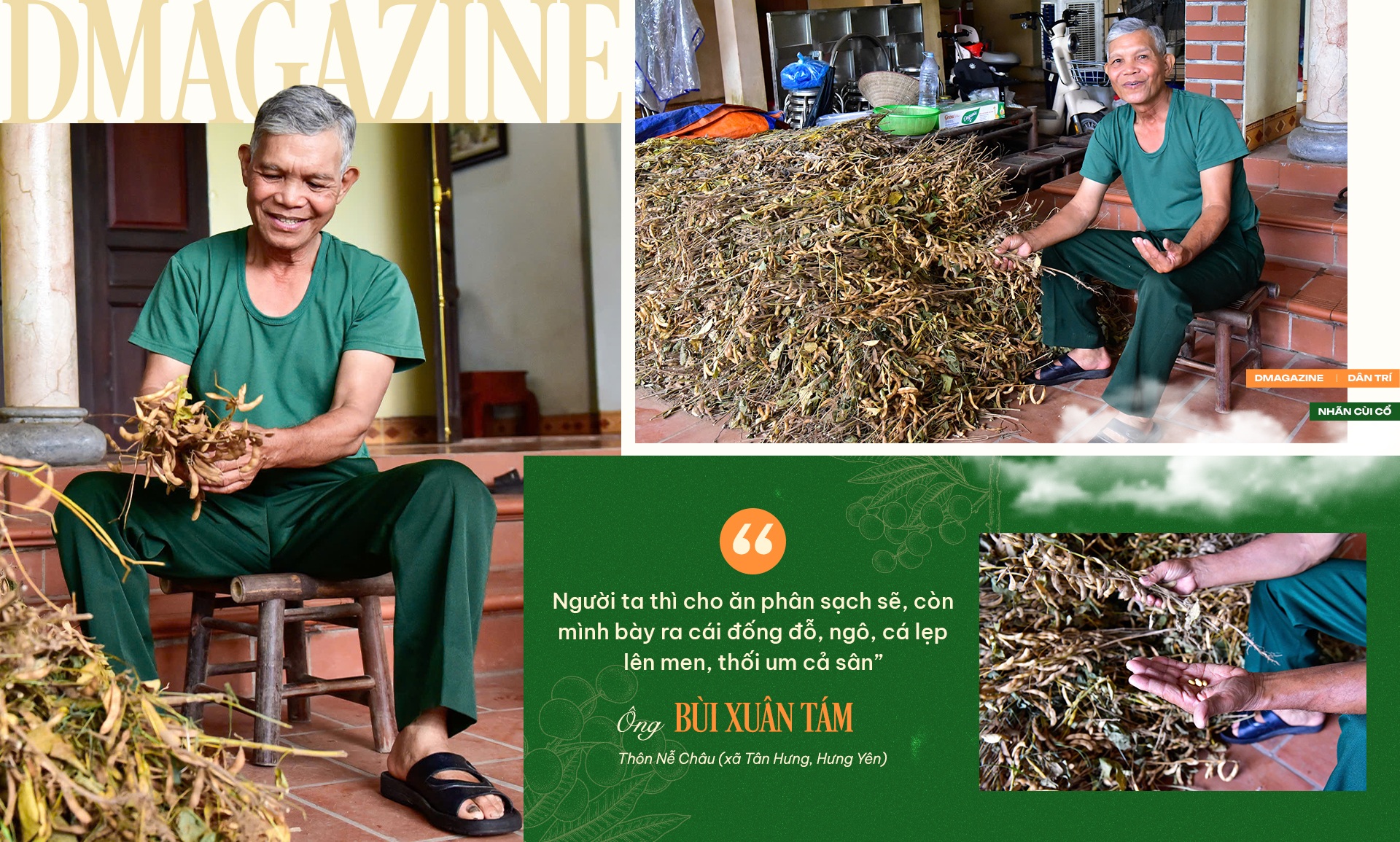
In the early years of preserving the old longan variety, Mr. Tam planted it based on instinct and memory. The garden had only a few dozen trees, the fruit was uneven, the yield was low, and the price was forced down by traders. But he was determined not to destroy it. “I thought, if the tree was once chosen to be presented to the king, then there must be a reason for it. My job is to find its true value,” he said.
The veteran also began to change his farming methods when he felt that the fruit he had been attached to all his life no longer had the same sweet taste. The longan tasted bland, the skin cracked when it rained, and the quality fluctuated uncontrollably.
When he first started working, the smell of manure was so strong that his wife and children did not dare stand near it. “Other people fed him clean manure, but I left behind a pile of fermented beans, corn, and anchovies that made the whole yard stink,” Mr. Tam recalled.
To reduce the smell, he soaked the phosphate fertilizer, stirred it thoroughly, then covered the compost mouth with a plastic bag, plastered the bottom with mud, and covered the surrounding area with soil. The compost was composted for exactly 6 months. Later, he bought biological medicine to deodorize it, stirring it over and over again until the smell was reduced to 3 parts.
He laughed: “Back then, people only used chemical fertilizers. NPK Dong Chau, Viet Nhat. Organic fertilizers were just manure, no one thought about beans or corn.”
With fertilizers, many people are afraid of organic because they think it is expensive. Mr. Tam thinks the opposite.
“A longan tree only eats about 2kg of my own fertilizer, which costs about 52,000 VND. Meanwhile, if I use Viet Nhat NPK, which costs 18,000 VND/kg, I have to feed it 3kg, and the fruit is not delicious,” the farmer analyzed.
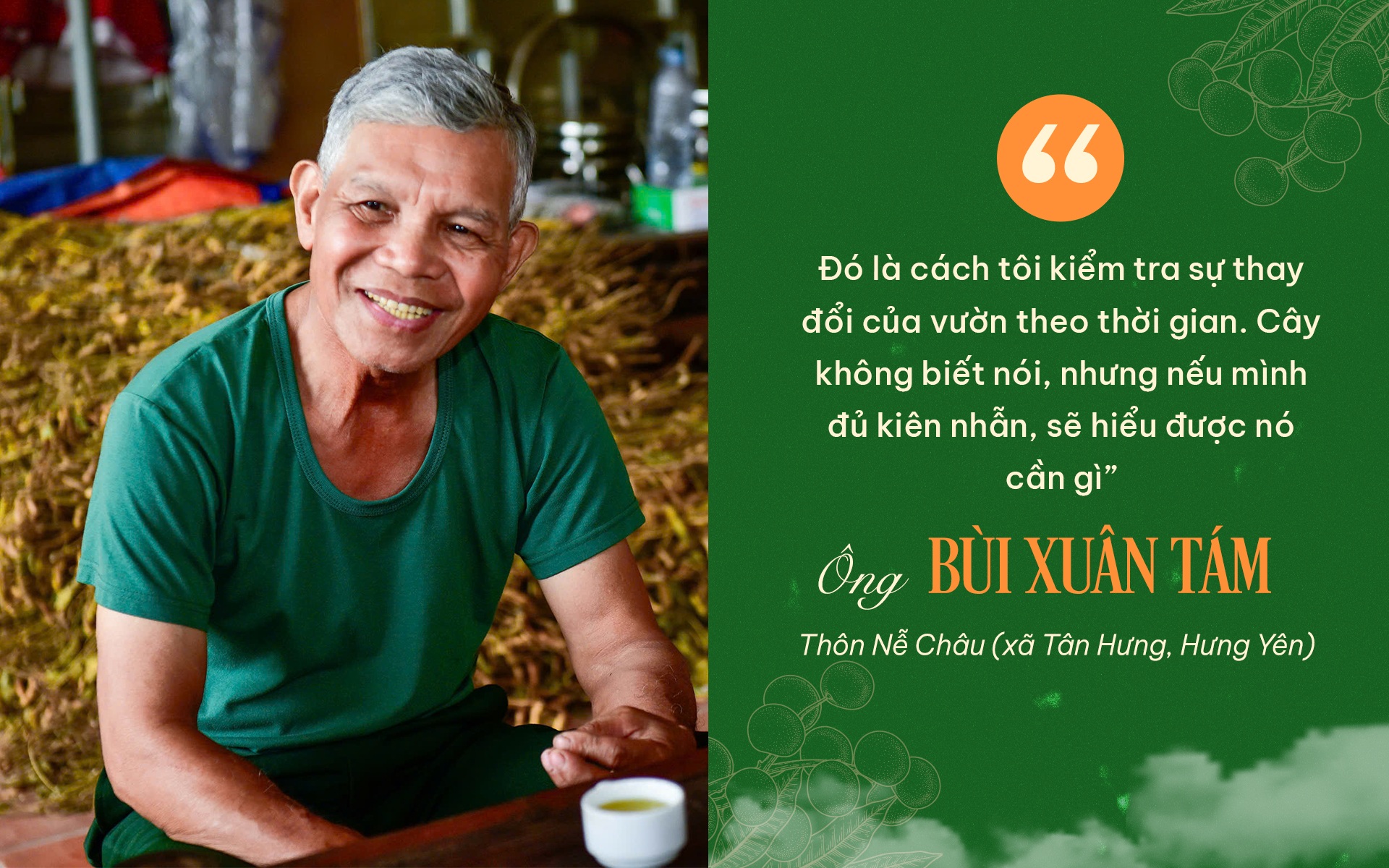
He researched on his own, then went to every technical transfer session, from the commune level to the ministry level. He went to every class organized, not missing a single session. Unlike many people who “attend classes just to show up”, he brought a notebook and pen, taking notes of every detail. “Write down whatever is interesting, write it down so you can remember to do it”, he said.
Learning theory was not enough, he practiced by going to field tests. About half a month before harvest, when the garden began to bear fruit, this farmer put on his hat and went to the field at noon, examining each garden one by one. For beautiful gardens, he wrote down: owner's name, pruning method, fertilizer, treatment time. For ugly gardens, he also wrote down: why are the leaves brown, why are the fruits small, is the owner diligent, has he applied any techniques?
There were times when he often went out to the garden at midnight, using a flashlight to shine on each longan tree, listening to the sound of the "tree breathing", feeling the humidity, the sound of the leaves, and the smell of the roots to assess the health of each tree.
“That’s how I check the changes in the garden over time. Plants can’t talk, but if you’re patient enough, they’ll understand what they need,” he laughs.
The first period was the most difficult. Some years, the trees bore fruit, some did not. Many times he doubted himself: “Is the variety pure? Is the soil suitable? Will growing trees in a new way be successful?”, he recalled with a smile.

After tireless efforts, the tree did not disappoint. Mr. Bui Xuan Tam found the standard formula to propagate and develop the precious longan tree. It is a combination of field experience and systematic science.
He asserted: “Anything requires experience, but science is the key. Experience supporting science is the pinnacle.”
The traditional teachings of our ancestors are applied by farmers: "Longan branches are like custard apples, mulberry branches are like pomelo branches". That is, to have delicious longan, priority must be given to custard apple branches - the main, strong branches. The ideal ratio is to keep 3 parts of custard apple branches, leaving only 1 part of the top branch.
“Too many branches act as an umbrella to block the sun, the fruit inside has no light, and tastes bland. You have to be selective so the tree can grow evenly,” said Mr. Tam.
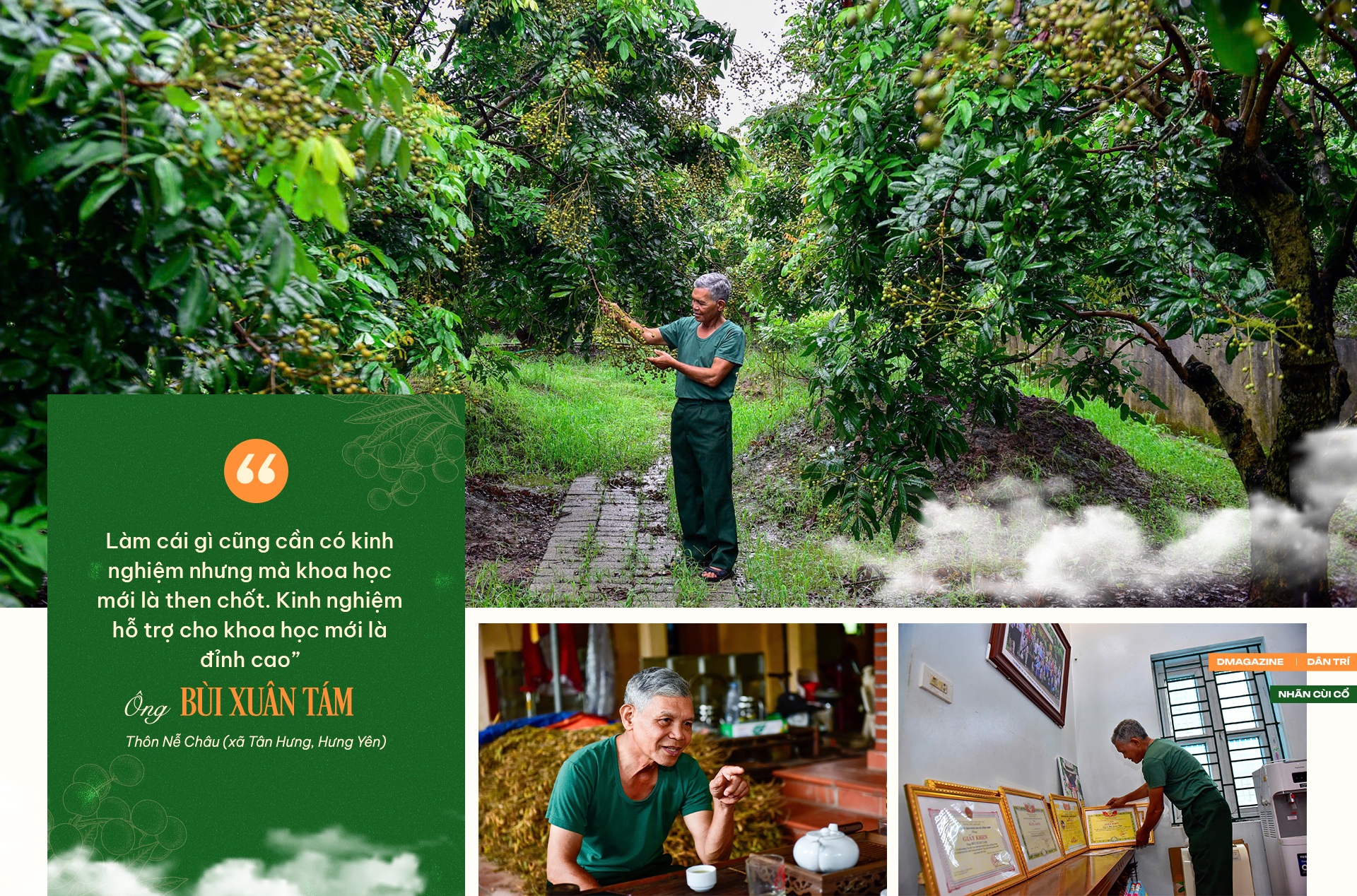
But he did not stop at experience. The farmer began to research and apply nano silver biological products - a new technology recommended by research institutes to replace chemical drugs.
“After the fruit forms, I spray periodically every 20 days to a month. The preparation creates a biofilm around the fruit cluster, preventing pests from entering. The longan is bright and beautiful, without needing a drop of pesticide,” Mr. Tam explained.
Mr. Tam once experimented: one tree was fertilized completely with inorganic fertilizer, one with a combination, and one with only organic fertilizer. As a result, the tree fed with organic fertilizer had longer fruiting, stronger flavor, thicker skin, and did not crack in the rain.
“Customers who come to eat can immediately tell which plants are organic. The fruit has a fragrant, lingering taste. Inorganic fruit tastes sour and bland, and rots quickly. Since then, I have only been loyal to organic fertilizers,” Mr. Tam shared.

Following Mr. Tam to visit his “fortune” that he has cared for for more than three decades, you will see longan trees stretching along the garden in the fruit-forming period. The green foliage, the wind blowing through, rustling like the steady breathing of the earth.
Under the broad canopy of trees, thick clusters of longan fruit grow, with round fruits. The branches with many fruits are tied with cloth to the bamboo frame to prevent them from breaking.
As he walked, he took out his phone to show off an old photo: “Last year, there was a bunch that weighed 3.7kg. I had to tie it with a rope or the whole branch would have broken,” Mr. Tam said with a hint of pride.
In June 2022, at the "First-line Longan Tree" contest organized by the People's Committee of Hung Yen province, his family's ancient longan tree was selected as one of the typical first-line trees.
Fruit has uniform quality, high reproduction ability, stable growth.
Every fruit season, Mr. Tam's old longans are sold out when they are still green. The selling price at the garden is stable at 80,000-120,000 VND/kg, many times higher than the normal variety. "Customers who come to the garden and eat the fruit will remember it forever. After eating, they call their family members to order more," he said.
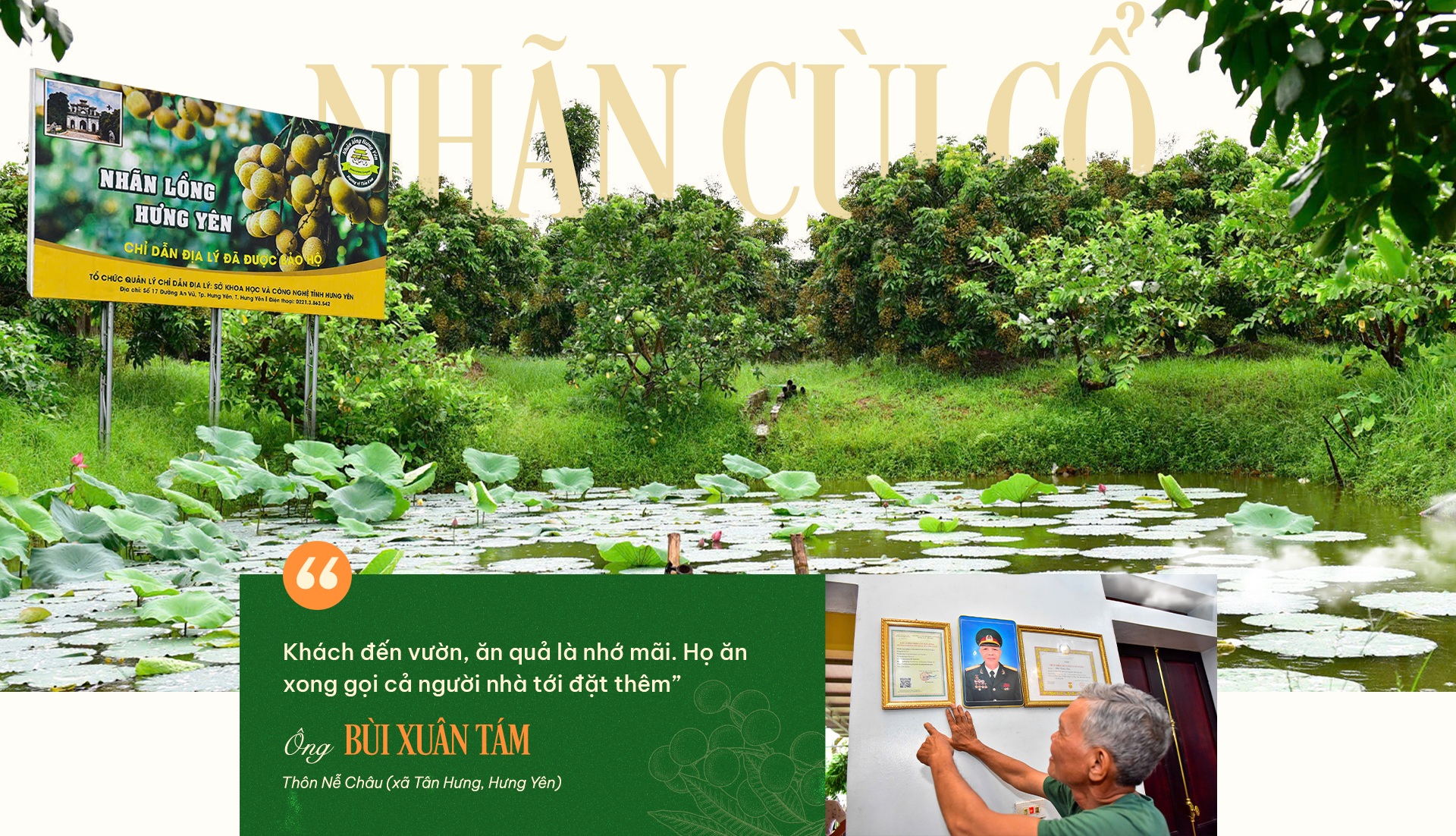
The journey to preserve and develop the royal specialty is not a solo one. Mr. Tam's daughter, Ms. Bui Thi Huong, has decided to follow in her father's footsteps. Together, father and daughter developed the Pho Hien Longan Cooperative.
The cooperative aims to develop high-end longan products for gifts.
At the time of launching in mid-2022, only 9 households participated. After a year, the number increased to 28 households. The specialty longan variety was widely grown, 95% of his family's area was converted to the ancient pulp variety, and many households followed suit.
Not only farming, he also organizes production. As the Party Secretary of the Cooperative, he sets out a clear principle: "If the technique is not done correctly, the Cooperative will not purchase." For him, meticulousness is not only a technical requirement, but also a responsibility to the land that has fed the whole village for generations.
According to Mr. Nguyen Van Trang - Deputy Director of the Department of Agriculture and Environment of Hung Yen province, Hung Yen is a key longan growing area in the North with an area of about 5,000 hectares, annual longan output reaching 40,000-50,000 tons, Hung Yen longan is not a separate longan variety, but a brand including 45 precious longan varieties that have been selected, preserved and produced. Of which, there are 2 specialty varieties: rock sugar longan and ancient flesh longan.
Previously, most of the province's longan area was mixed longan gardens (including many varieties) because people mainly used mixed varieties and planted them by seeds. Since 1998, through the process of production development, the province has selected a number of longan varieties with good productivity and quality to put into production.
Also during this period, the improvement of propagation methods from using seedlings grown from seeds by methods such as cuttings and grafting played an important role in improving the mixed longan areas of the province as well as proactively ensuring a good source of seeds to meet the need to convert from growing rice or corn, beans (on alluvial land) to growing longan.
Source: https://dantri.com.vn/khoa-hoc/quyet-giu-loc-pham-tien-vua-lao-nong-thu-loai-nhan-dat-gap-10-lan-20250725184507362.htm



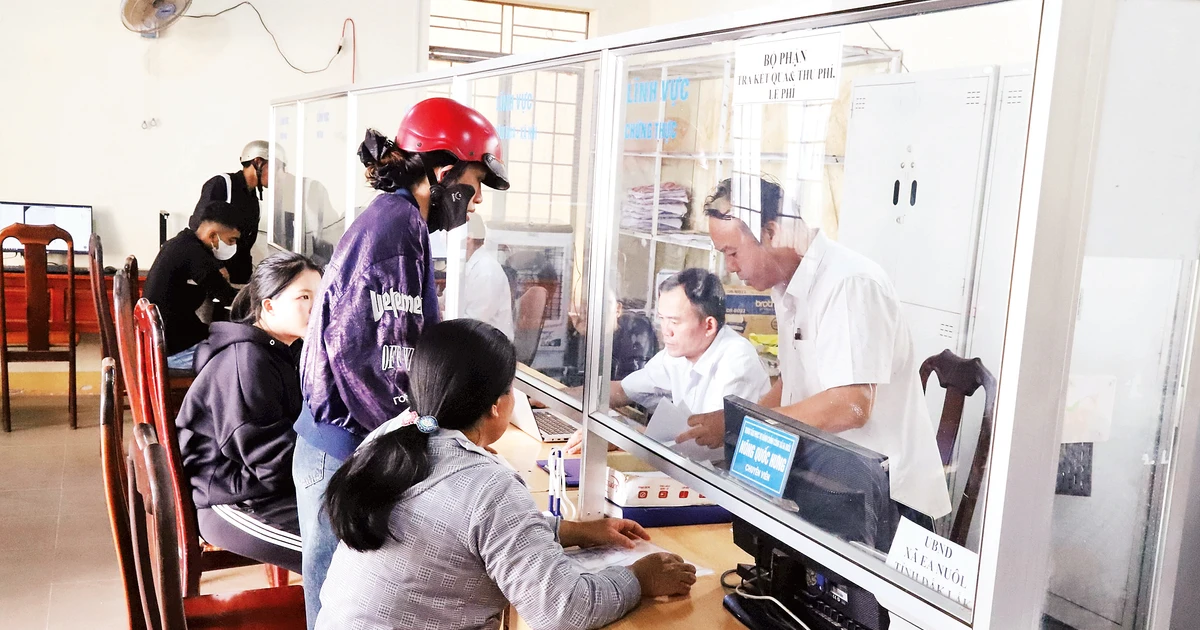


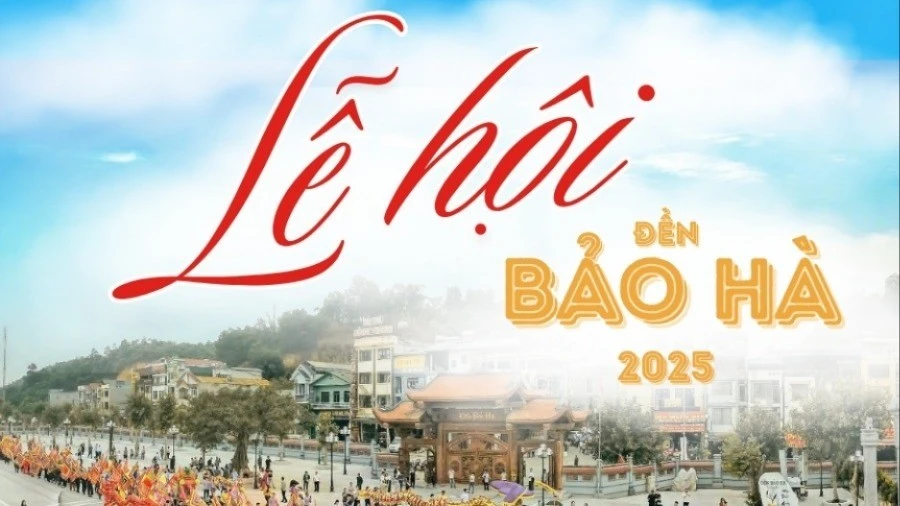

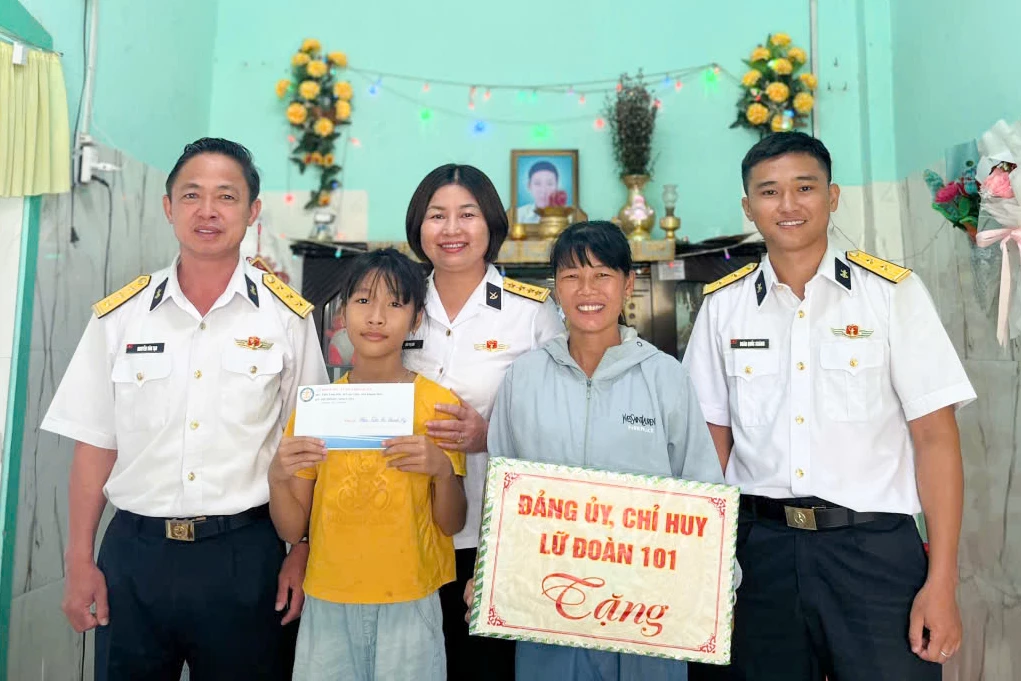

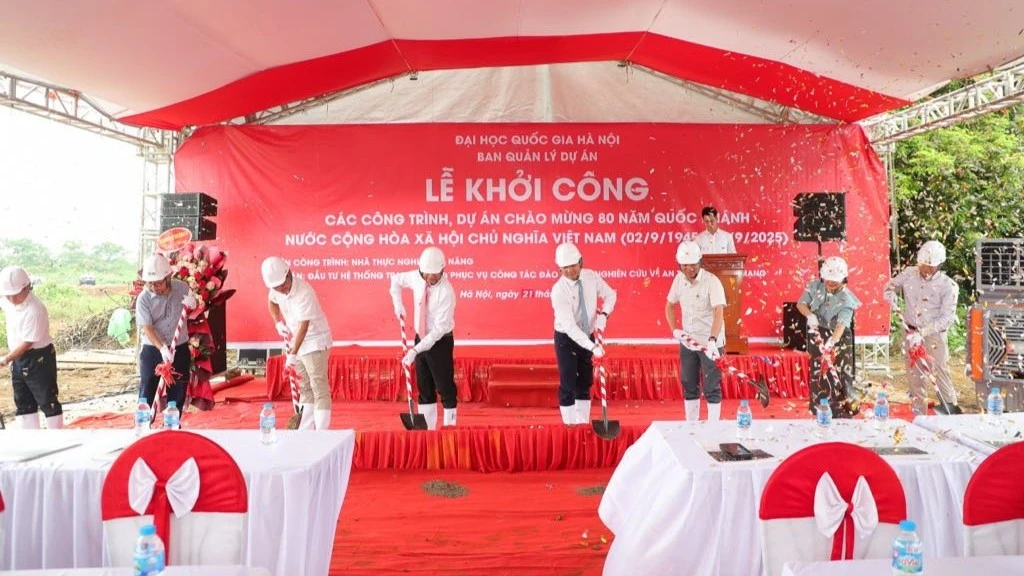
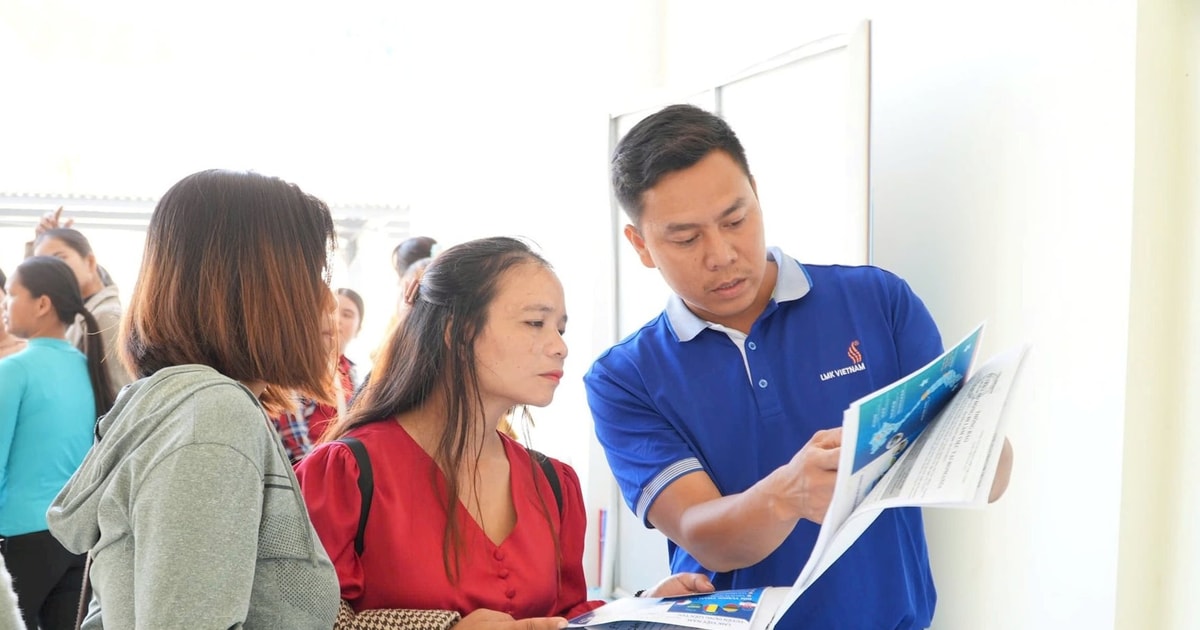
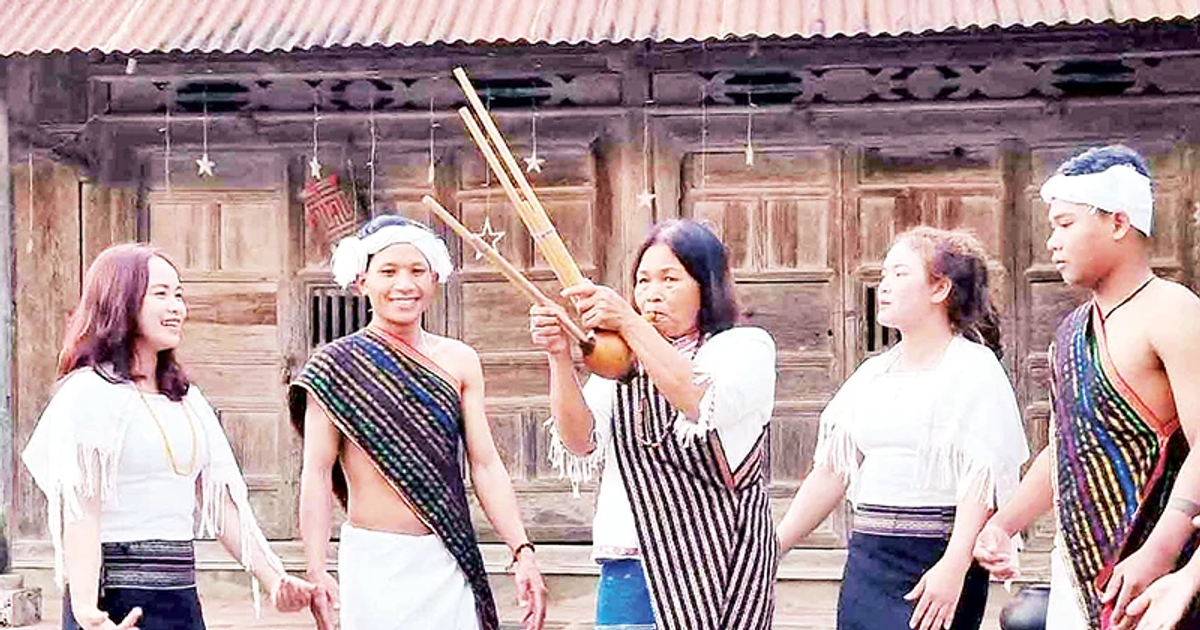














![[Photo] An Phu intersection project connecting Ho Chi Minh City-Long Thanh-Dau Giay expressway behind schedule](https://vstatic.vietnam.vn/vietnam/resource/IMAGE/2025/8/21/1ad80e9dd8944150bb72e6c49ecc7e08)

































![[Photo] Politburo works with the Standing Committee of Hanoi Party Committee and Ho Chi Minh City Party Committee](https://vstatic.vietnam.vn/vietnam/resource/IMAGE/2025/8/21/4f3460337a6045e7847d50d38704355d)
































Comment (0)